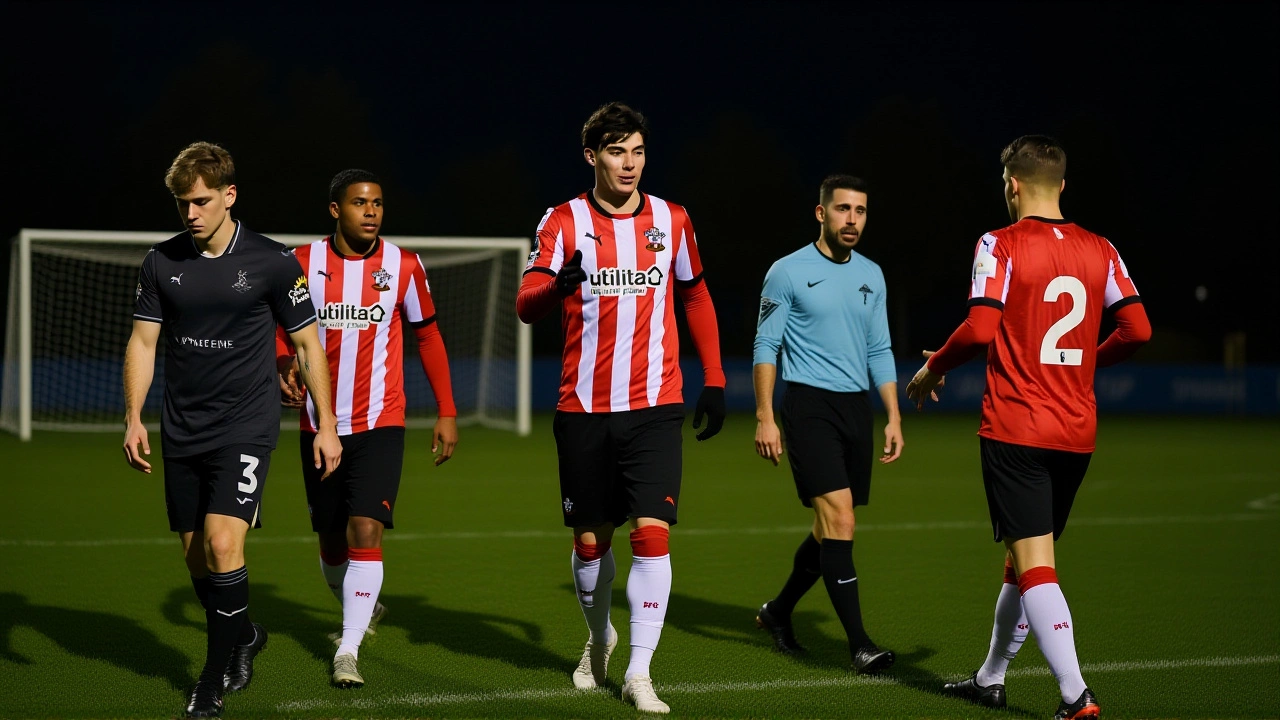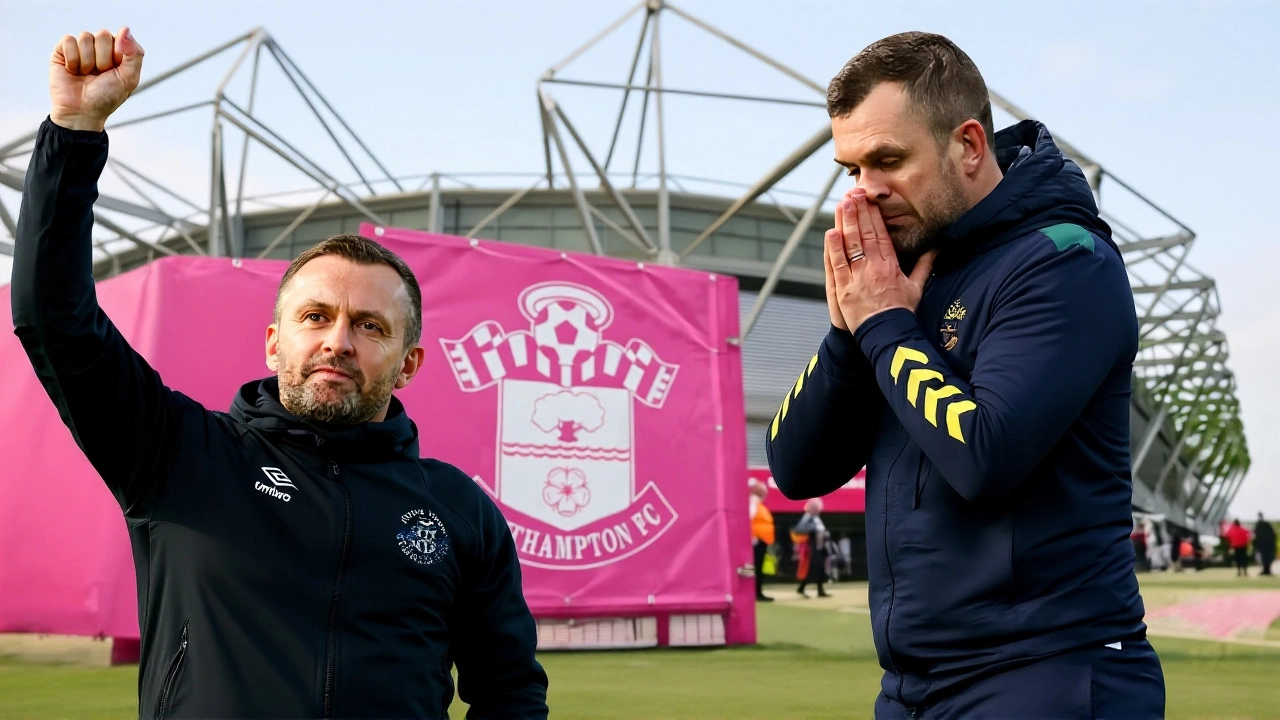On November 22, 2025, Southampton FC thrashed Charlton Athletic 5-1 at The Valley in London — yet fired their manager, Nathan Jones, the very next day. It wasn’t just strange. It was surreal. Jones, who had led Luton Town to League One promotion in 2018 and guided Charlton Athletic to the 2025 League One play-off final triumph, was shown the door after just 95 days at the helm of the Saints. The win over his former club, featuring goals from Finn Azaz (22’, 43’), Caspar Jander (20’), Adam Armstrong (16’), and Ryan Manning (14’), wasn’t just a result — it was a paradox. How do you win big and get sacked? The answer, it turns out, lies in more than just goals.
Why a 5-1 Win Wasn’t Enough
Jones’ post-match comments told the real story. "We sat back. We didn’t go engaging them," he admitted, voice heavy with frustration. "We were passive. That’s not us." He praised Charlton’s 20-minute burst of energy — "the best 20-25 minute spell we’ve seen from a team this stage of the season" — but blamed his own side’s lack of intensity. Even in victory, Southampton looked disjointed. The 3-4-3 formation, meant to press high and dominate, instead collapsed into a shell. Yellow cards to T. Campbell, G. Docherty, and K. Ramsay for Charlton reflected their scramble, not Southampton’s control. The stats didn’t lie: 55% possession, 18 shots, but only 6 on target. The team looked like it was playing not to lose, not to win.
And that’s the problem. Jones’ reputation was built on grit, structure, and relentless work ethic — hallmarks of his time at Luton and Charlton. At both clubs, he turned underdogs into fighters. But at Southampton, the players seemed disconnected. The club’s 5-6-5 record (21 points from 16 games) placed them 13th in the Championship, just above the relegation zone. Behind them: Sheffield United (10 points), Norwich City (9), and Sheffield Wednesday (4). Ahead: Ipswich Town and Derby County, both on 23 points. The gap wasn’t massive — but the momentum was gone.
The Jones Paradox: Why He Won Elsewhere, Failed Here
Here’s the twist: Jones didn’t fail because he was a bad coach. He failed because his system didn’t fit the culture. At Luton Town, he inherited a club with a strong identity — working-class, hungry, and unified. At Charlton Athletic, he inherited a team that had just clawed back from the brink, fueled by the 2019 promotion heroics of Patrick Bauer and the 1998 play-off final legend of Macaulay Gillesphey. The players believed in him. At Southampton? Many didn’t.
Reports suggest the dressing room was divided. Veteran players resented Jones’ rigid training methods. Young talents felt stifled. The club’s recruitment strategy — signing aging Championship veterans rather than developing youth — clashed with his high-intensity philosophy. When injuries piled up — key midfielder Adam Armstrong missed two games, and full-back Ryan Manning played through pain — the system cracked. The 5-1 win over Charlton? It came with five changes from the previous match. It looked like a fluke.

Enter 'Tonda' — The Miracle Manager
Within 48 hours of Jones’ departure, a new face appeared on the touchline: Tonda. No full name. No press conference. Just a quiet, intense presence. Within two weeks, Southampton won three straight matches. The team pressed. They ran. They looked alive again. YouTube commentators started posting: "The difference has been night and day since Tonda took over. Sometimes you wonder whether the players are just duds, and then a manager..."
It wasn’t magic. It was clarity. Tonda simplified the tactics. He trusted youth. He gave players ownership. The 3-4-3 became a weapon again, not a burden. The players stopped looking over their shoulders. They started playing for each other. The contrast was brutal: Jones, the architect of lower-league miracles, undone by the very system that once made him a hero. Tonda? He didn’t need to reinvent anything. He just had to unlock what was already there.
What This Means for Championship Management
This isn’t just about Southampton. It’s a warning to clubs everywhere. The Championship is no longer about hiring the most experienced coach. It’s about cultural fit. Jones’ success at Luton and Charlton wasn’t luck — it was perfect alignment. At Southampton, it was a mismatch. The club’s board wanted a "big name" to fix their problems. They got a coach whose methods were brilliant — in the right context.
Meanwhile, the league table tells its own story. Ipswich Town and Derby County are leading with consistency. Birmingham City and Charlton Athletic are clinging on. And Southampton FC? They’re a cautionary tale. A club with history, ambition, and resources — but no clear identity.

What’s Next for Southampton?
With Tonda in charge, the club is quietly rebuilding. Youth academy products are being fast-tracked. The transfer window in January will be critical. If they can land one or two proven Championship performers — not stars, but solid, hard-working types — they could climb into the playoff race. But the real test? Sustaining momentum. Can they avoid the trap of over-relying on a single manager? Can they build a culture that outlasts any one person?
One thing’s clear: Nathan Jones didn’t fail because he was bad. He failed because he was too good — for the wrong place. And sometimes, that’s the most painful kind of failure.
Frequently Asked Questions
Why was Nathan Jones fired after a 5-1 win?
Despite the scoreline, Southampton’s performance was passive and uncharacteristic of Jones’ usual high-energy style. He admitted his team "sat back" and failed to engage opponents, raising concerns about tactical discipline and player buy-in. The win was seen as an outlier, not a turnaround, especially with the team sitting just above relegation and injuries mounting.
How did Jones succeed at Luton Town and Charlton Athletic but fail at Southampton?
At Luton and Charlton, Jones inherited clubs with strong identities, unified squads, and a hunger to climb. His structured, disciplined approach matched their culture. At Southampton, the squad was fragmented — veterans resistant to change, young players underdeveloped. The club’s recruitment strategy clashed with his methods, and the pressure of Championship expectations eroded his authority.
Who is 'Tonda,' and why has his impact been so immediate?
'Tonda' is an interim manager whose full identity remains unconfirmed, but his approach has been simple: trust the players, simplify tactics, and restore confidence. Unlike Jones, he didn’t overhaul systems — he unlocked existing potential. Within weeks, Southampton’s energy, pressing, and cohesion improved dramatically, suggesting the issue wasn’t player quality, but leadership style.
What does this say about Championship management trends?
The Championship increasingly rewards cultural fit over pedigree. Clubs are realizing that a manager’s past success doesn’t guarantee results if their philosophy clashes with the squad’s DNA. Southampton’s case mirrors other recent failures — like Frank Lampard at Derby — where experience mattered less than adaptability and connection with players.
What’s the historical significance of Charlton Athletic’s 2025 promotion?
Charlton’s 2025 League One play-off win, sealed by Macaulay Gillesphey’s goal against Leyton Orient, marked their return to the Championship after a three-year absence. It echoed their 1998 promotion and 2019 return via Patrick Bauer’s 94th-minute winner — cementing their status as one of England’s most resilient lower-league clubs, making Jones’ departure from them even more ironic.
How does Southampton’s 2025-26 season compare to their past campaigns?
Southampton’s 21 points from 16 games in 2025-26 is their worst start since 2005-06, when they narrowly avoided relegation. Historically, they’ve been a top-half Championship side — even after relegation from the Premier League in 2005, they bounced back quickly. This season’s instability, combined with managerial turnover, has shaken fan confidence more than any win or loss.
